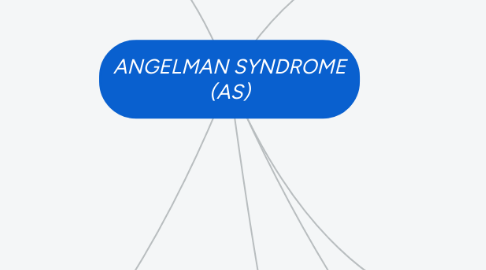ANGELMAN SYNDROME (AS)
af mildred o'rama


1. Genetic details/etiology:caused by disruption of maternally imprinted UBE3A located within the 15q11.2-q13 AS/PWS region
1.1. recent studies suggest that diverse symptoms of AS are mediated by distinct circuits, cell types, substrates and downstream pathways that act at different developmental stages.
2. Clinical Findings
2.1. Typically present: normal prenatal and birth history, no major birth defects; delayed attainment of developmetal milestones without loss of skills; evidence of developmental delay by age 6 to 12 months, eventually classified as severe; speech impairment; movement or balance disorder, usually ataxia of gait and/or tremulous movement of limbs; behavioral uniqueness, happy demeanor, excitability, hand-flapping movements and hypermotoric behavior.
2.2. more than 80% of affected individuals have: absolute or relative microcephaly by age 2 years; seizures starting before age 3 years.
2.3. fewer than 80% have: protruding tongue; tongue thrusting, suck/swallowing disorders; feeding problems and/or muscle hypotonia during infancy; frequent drooling; strabismus; hypopigmented skin; uplifted flexed arm esp. during ambulation; increased sensitivity to heat; abnormal sleep-wake cycles; attraction to/fascination with water; obesity; scoliosis; constipation.
3. Evaluations: baseline brain MRI and EEG; musculosketal examination for scoliosis and gait impairment, orthopedic referral as needed; ophthalmology examination for strabismus, visual acuity; developmenta evaluation focused on nonverbal language ability, educational and teaching strategies, physical therapy to enable optimal ambulation; evaluation for GERD; dietary evaluation; consultation with a clinical geneticist
4. Causative/risk factors: deletion of the AS/PWS region on the maternally inherited chromosome 15; UPD (uniparental disomy) of the paternal chromosome 15; an imprinting defect (ID); a pathogenic variant in UBE3A; unidentified mechanisms; family history
4.1. genetic counselling:
4.1.1. should be offered to young adults at risk of having children with AS including discussion of potential risks to offspring and reproductive options
5. Management
5.1. Treatment of manifestations:
5.1.1. feeding problems in newborns may require special nipples; GERD: upright positioning, motility drugs, fundoplication; antiepileptic drugs; Ritalin for hyperactivity; physical/occupational/speech therapy; high fiber diet, laxatives for constipation; thoraco-lumbar jackets for scoliosis
5.2. Surveillance:
5.2.1. annual clinical examination for scoliosis; evaluation for development of obesity due to excessive appetite and decreased physical activity

